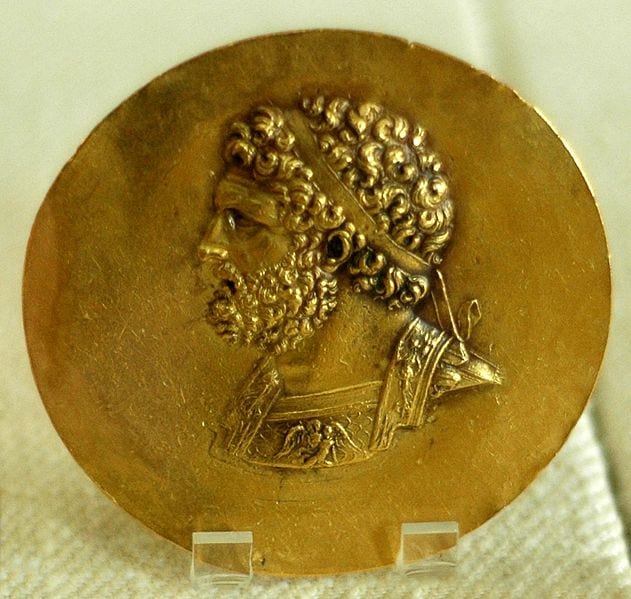Written by Nick Batora, Athens Science Observer
The tomb of King Philip II has been found in Vergina, Macedonia. King Philip II ruled the ancient Greek kingdom of Macedon, but is best known as the father of Alexander the Great.
Three Royal Tombs (I, II, and III) were discovered in the 1970's in modern day Macedonia. The remains of a male, female, and newborn were found in Tomb I and another male's remains were found in Tomb II.

Originally, the remains in Tomb II were believed to be those of Philip II due to the rich array of grave goods found within the tomb. However, the skeleton in Tomb II did not contain any distinct lesions on the legs, which would be expected due to a highly documented battle wound to the leg Philip II received three years before his death. Thus, the identification of the remains in Tomb II as Philip II has been highly controversial.
Researcher Antonis Bartsiokas and colleagues used modern forensic techniques on the bones of the male skeleton found in Tomb I to determine if they are actually the remains of Philip II. They found evidence of knee ankylosis, where an overgrowth of bone tissue covered up a hole through the knee. Further exploration found no evidence of infection, which indicates that the hole in the knee was likely due to a penetrating wound.
Age-estimation techniques suggested the male to be around the age of 45 years old, which is close to the believed age of Philip II upon his death. These results, published in the journal PNAS, suggest that researchers have correctly identified the remains of King Philip II
About the Author
- athenssciencecafehttps://athensscienceobserver.com/author/athenssciencecafe/April 17, 2020
- athenssciencecafehttps://athensscienceobserver.com/author/athenssciencecafe/April 12, 2020
- athenssciencecafehttps://athensscienceobserver.com/author/athenssciencecafe/April 3, 2020
- athenssciencecafehttps://athensscienceobserver.com/author/athenssciencecafe/March 30, 2020







